Why Is My Jade Plant Yellowing & Leaves Falling Off?
It is always better to determine the cause of the yellowing jade leaves so that you know how to adjust your care regime accordingly. While both over and under watering are main reasons behind it, don’t forget to keep an eye on other problems.
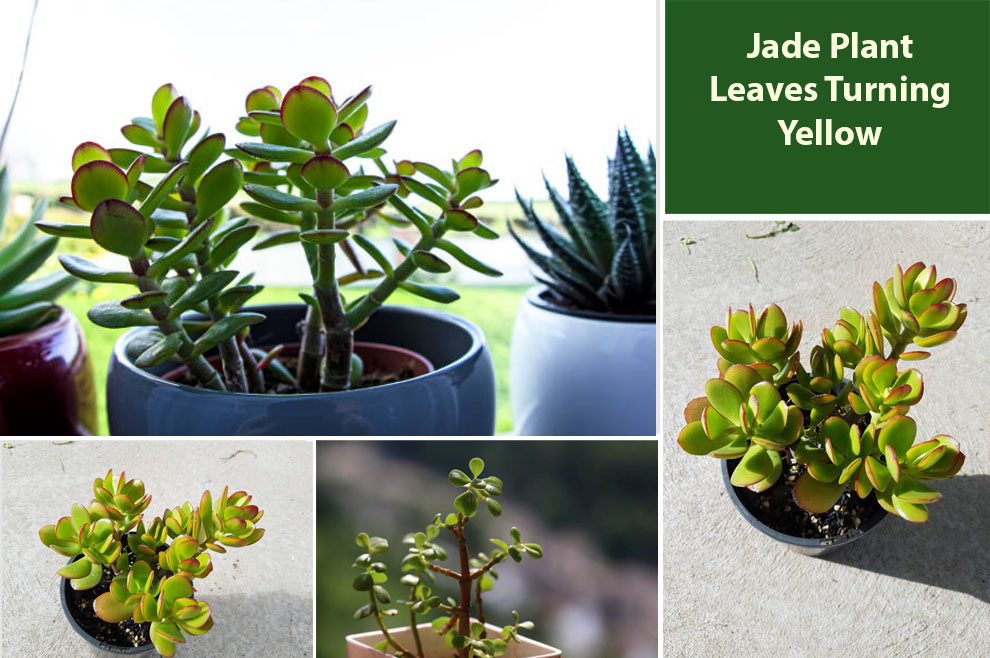
Jade or the friendship tree, one of the most loved succulents symbolizing prosperity and good luck, is a great addition to your home. Often planted outdoors and also kept indoors, Jade is the most low-maintenance and extremely versatile plant. It is notoriously known for being difficult to kill.
The reason why Jade varieties are a popular houseplant is that they require very less attention and can survive any climate. However, Jade faces a lot of common issues that can panic the plant owners.
One of them is their leaves turning yellow and falling off. If you notice your Jade plant leaves turning yellow before it has reached a certain age, it could be because of many reasons.
Common causes include lack of sunlight or too much light, overwatering or underwatering, pests, diseases, inconsistent temperature and improper nutrients.
What Are The Possible Causes of Jade Leaves Turning Yellow?
Have you started noticing that your Jade plant is turning yellow and falling off? Do not worry. Know that some leaves turn yellow with age and also some Jade plant cultivars have naturally yellow leaves from the beginning.
Apart from these two reasons, there are some causes of yellow leaves in jade that should be a sign of concern for you.
Overwatering is one of the main causes. Some of the other causes include pests, disease, excessive fertilizer, underwatering, sunlight issues or temperature stress.
Let’s look at some of these causes in detail:
1. Old Age
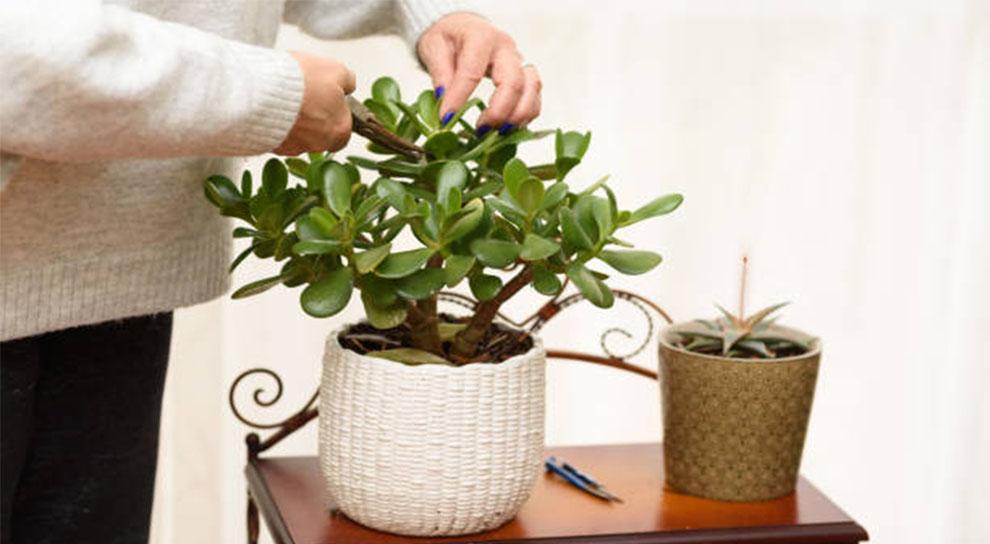
One of the common explanations of leaves turning yellow and falling off is simply aging. Jade plants can survive for decades if they are well cared for.
As they grow old, their leaves start to turn yellow and fall off, making space for new leaves to grow. However, there is one thing that you need to look for – Are all the Jade plant leaves yellowing and falling off? Then maybe age is not the cause.
Usually, when the plant is growing old, mostly few leaves from the bottom turn yellow at a time as the change happens slowly. It will take time before it starts affecting your entire plant.
2. Dormancy during winters
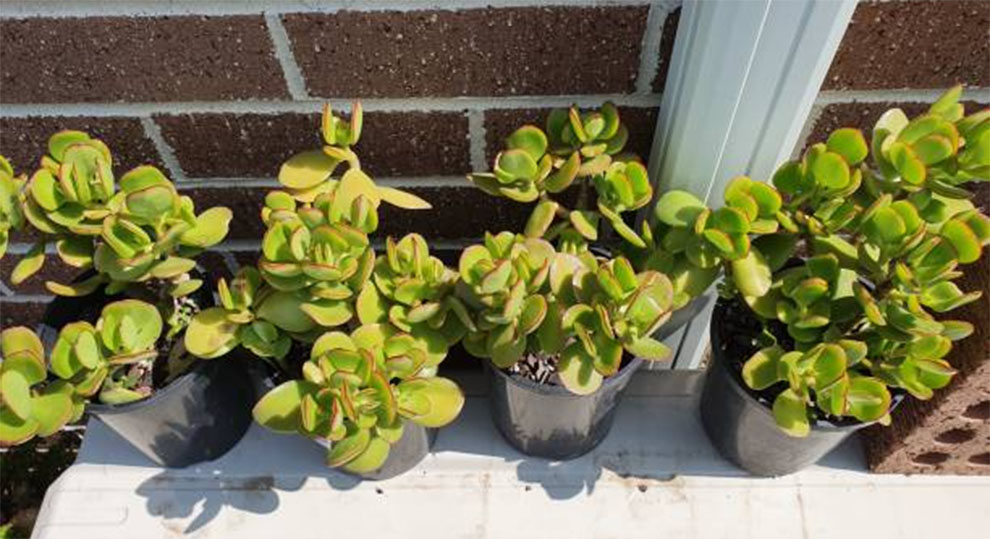
Jade plants when exposed to the cold tend to retreat. Part of this retreating process is when their green and supple leaves turn rough and yellow. Jade plants, being succulents, are meant to live in temperatures around 70 to 88°F. Hence if the weather dips below 65°F, they are often in trouble and turn yellowish.
3. Pest infestation
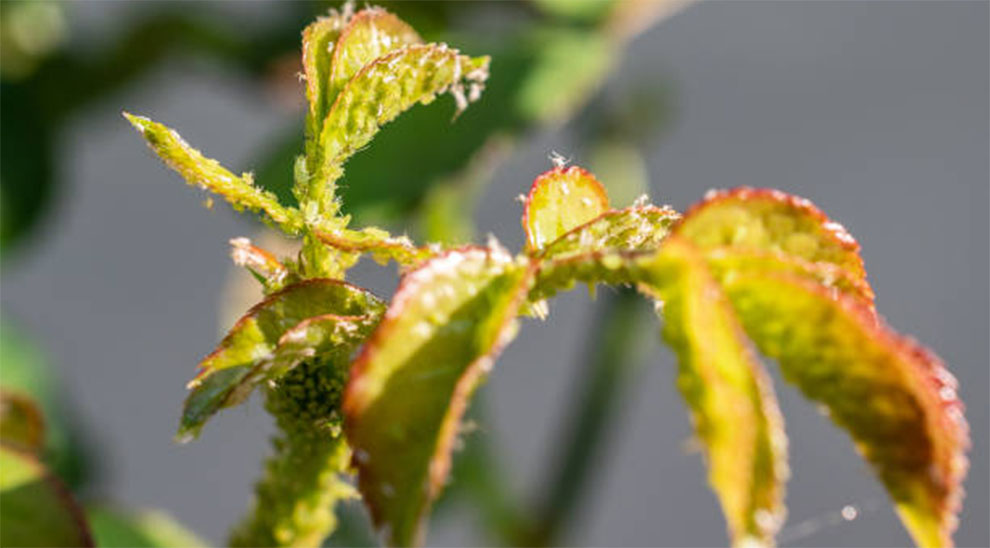
Though succulents are mostly safe from pest attacks, in rare cases they too might suffer from one. The pest infestation can damage the roots and leaves which can result in yellow leaves and eventually their fall out.
Many pests can infect your plant. But the prevalent ones are mealybugs. They live on your jade plants and and extract out the nutritious components. This causes yellowing of Jade plant leaves along with unhealthy spots on the leaves here and there. This bug infestation happens at the base of the leaves.
Some of the other pests that can affect your plants are spider mites, scale, or aphids.
If left untreated, these pests can affect your entire plant. So, it is necessary to carefully inspect your plant regularly to prevent the problem from spreading.
Cleaning your jade leaves with diluted rubbing alcohol or horticulture oil or using a store bought spray or insecticidal soap can help you get rid of these pests.
4. Diseases
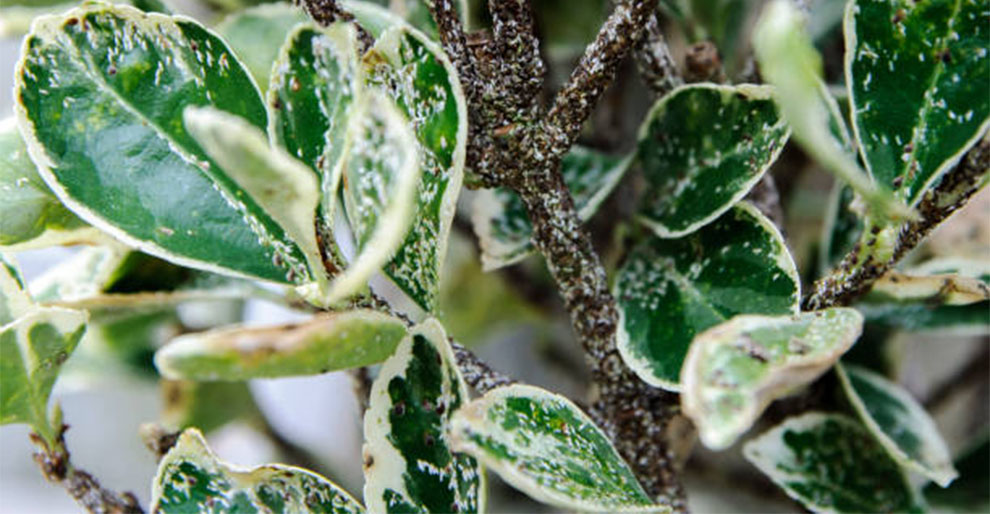
A disease or an infection can cause your Jade plant yellowing. So, how do you identify? Simply look for brown or yellow patches on the leaves or signs of rotting around the crown.
Other common diseases include powdery mildew, root rot, bacterial soft rot. Powdery mildew fungus forms white spots on the leaves. These spots can look yellow. They start on lower leaves and can spread to higher ones. Catching it early can help you save your Jade.
These problems might be a result of high humidity or overwatering. If you water too often, it causes decay of roots and can then damage your leaves and stems. Once this problem develops, it can be hard to treat it. So, it is necessary to manage the water.
5. Lack of sunlight
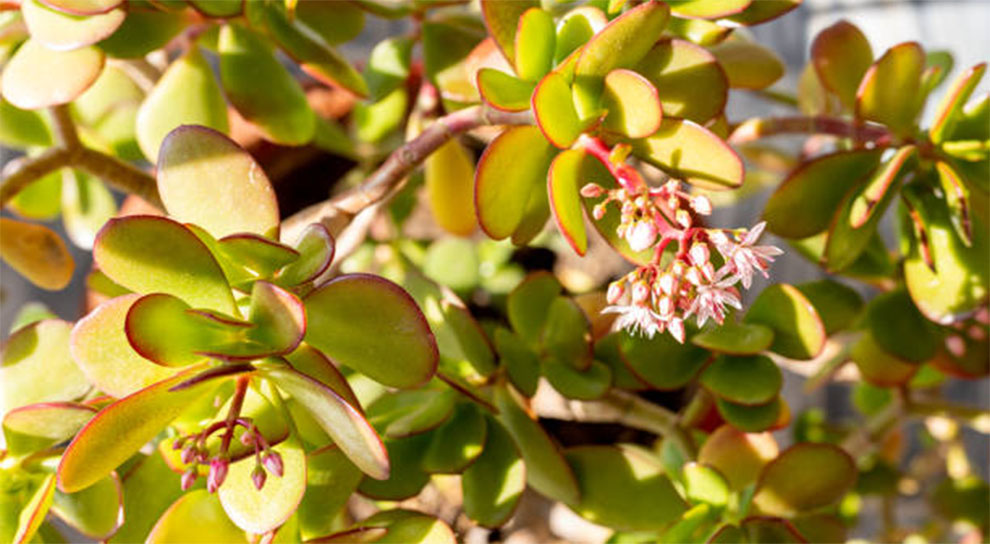
One of the reasons why your Jade plant is turning yellow and falling off is because it lacks sunlight. This mainly occurs when you are growing your Jade indoors.
Sunlight will make the leaves get their beautiful colors of bright green and red leaves, while lack of it will make them look yellow and pale. Plus the leaves will also start falling.
Jade should get at least 6 hours of sunlight every day so that the leaves don’t turn yellow and fall off. Jade is easy to grow. You can grow them indoors, but if you are noticing jade plant yellowing or dropping leaves, giving your plant a few hours of sunlight might be a good idea.
If your Jade is young, it would need more indirect sunlight. Aging plants need more direct sunlight. Overall, you should provide your Jade few hours of direct sunlight, while the rest of the day it can stay indoors.
You should also make sure that you are not giving too much sunlight as it can cause the leaves to change colors. The leaves do this to protect themselves from light damage.
6. Overwatering
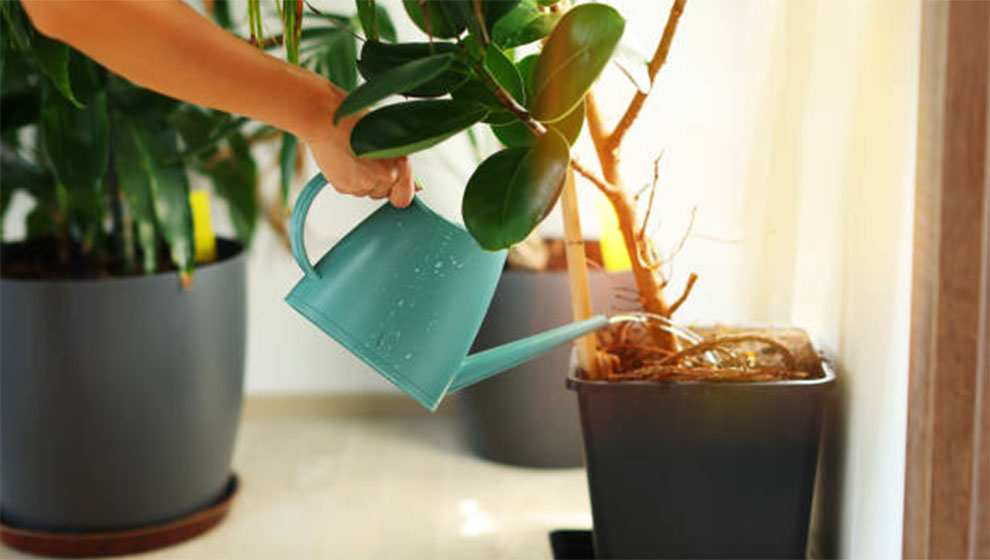
Jade plant being a succulent does not require much water. What you should be cautious about is not overwatering your plant. Overwatering is usually the cause of yellow leaves, especially if it is an indoor plant.
Following a watering timetable is also a good idea to avoid overwatering, but it is always not the best thing to do. Many factors determine how much water is needed by your plant.
As a thumb rule, water your Jade plant when the soil feels dry. Check your soil and if you don’t feel the moisture in your hand, water your plant.
When your plant grows in wet and soggy soil for a long time, the plant leaves become swollen due to excess water absorption. However, when the roots are unable to get required oxygen, they become stressed and start to rot. This in addition to improper nutrients makes leaves yellow.
If you notice Jade leaves going yellow along with soggy and poorly draining soil, then know that overwatering might be the cause.
7. Underwatering
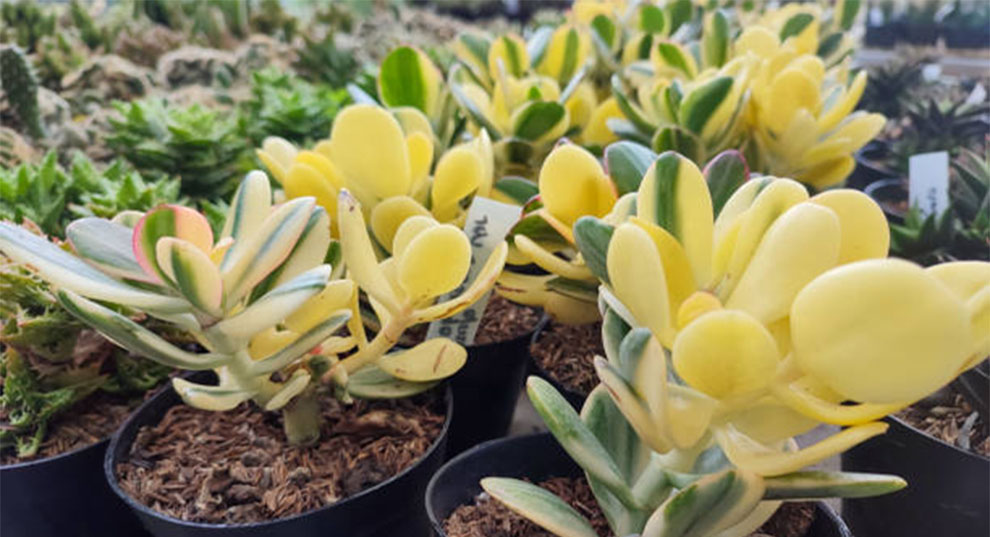
If you haven’t watered your Jade for a long time, then you will notice that the leaves are withering and turning yellow.
A healthy Jade has smooth and green foliage, whereas old underwatered leaves tend to be harder to touch and yellow in color.
For keeping your Jade healthy and green, water is important. If you live in a region with a cool and wet climate, water once every few weeks or once a month. However, if the climate in your area is hot and dry, watering once every other week is necessary.
If your plant already has too many brittle yellow leaves, pluck out the most damaged ones first.
Now water the roots. Keep the water going in till you see some of it seeping out of the drainage holes. Water them every other week. Maintain this watering style for next couple of weeks, till you see a greener plant.
8. Frost
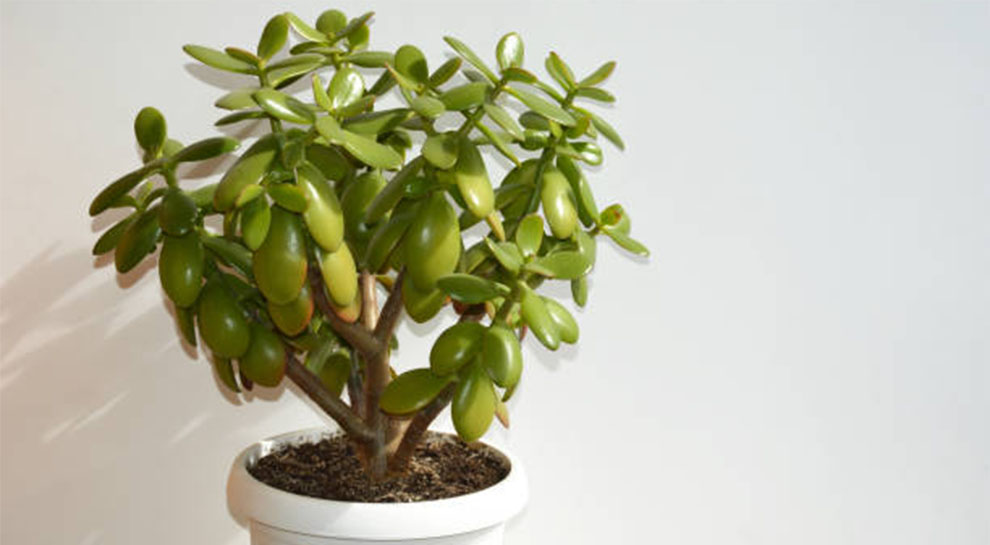
Jade cannot tolerate the cold as it is not frost-tolerant. Freezing temperatures will likely turn your Jade leaves yellow and end up killing them. Once the temperature falls below 50°F, it is better to find a warmer place for your plant.
You can even add heat lamps to the room where your Jade plant is or winterize your outdoor Jade in cooler weather.
9. Improper soil lacking nutrients
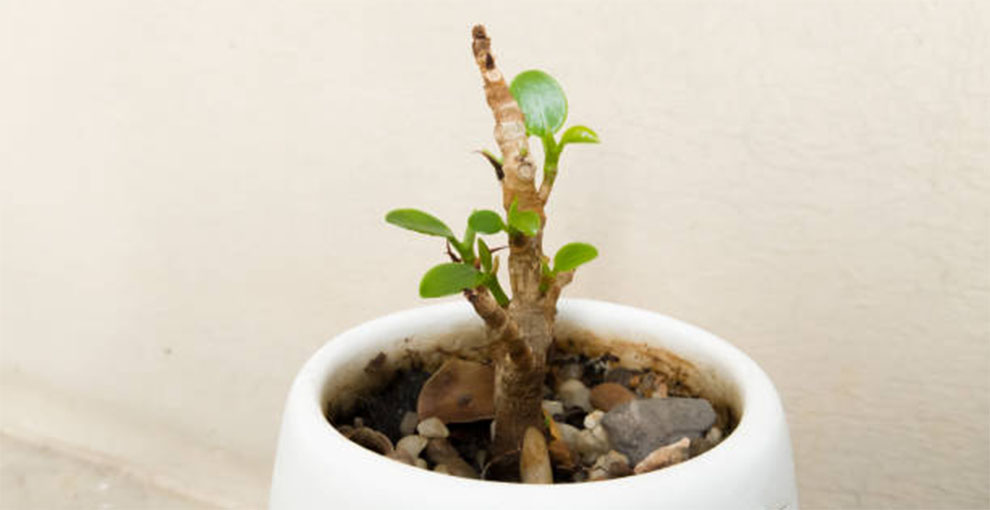
It is vital to plant your Jade into the soil with the right levels of pH. If the soil doesn’t have the right kind of acidity, then your plant will not get the required water and nutrients to stay healthy.
These plants grow well in well-draining soil. Their preferred soil pH is 6, keeping them on the acidic side. The roots of this plant begin to shrink if the soil is too alkaline. With improper nutrients reaching the leaves, they will turn yellow.
10. Excessive use of fertilizers
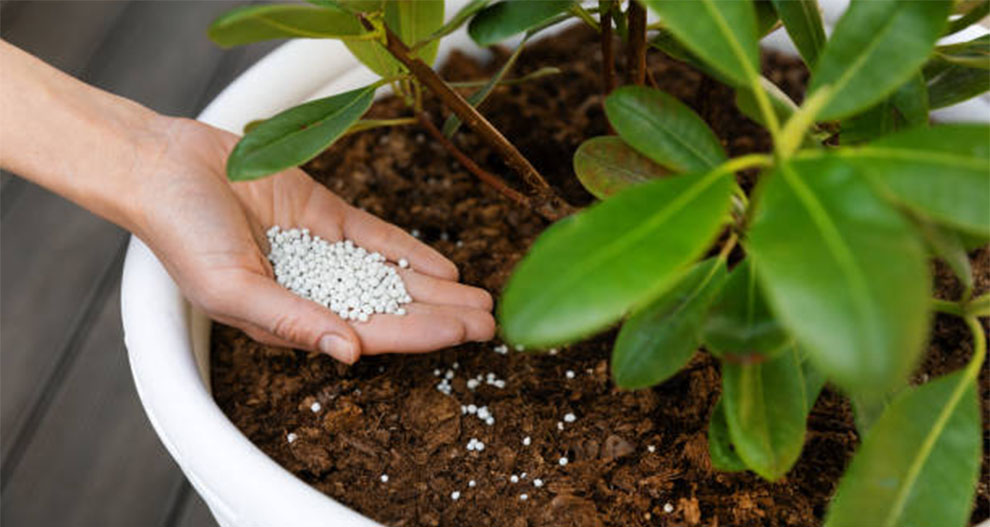
Jade plants usually do not require fertilizer. However, if you add a little bit of fertilizer, it will benefit your plant.
Too much quantity of fertilizers can harm the roots of your plant and impact the pH level. This leads to imbalance of nutrients.
When the roots get damaged progressively, you will see Jade plant leaves going and falling off as the roots are not healthy enough to soak in the nutrients and water needed by the plant.
So, if you have fertilized your plant continuously using a strong plant food, then it could be the cause of your jade plant leaves turning yellow due to toxicity.
Look for white spots on the leaves regularly which are deposition of excess minerals. You might also notice fertilizer salt deposits in the soil where you have planted your Jade.
In case this happens, stop fertilizing altogether for at least three months and get rid of the excess fertilizers by watering the plant generously.
Once the plant has regained its shape and structure, use a water-soluble jade fertilizer by diluting it during the active growing season.
11. Transplant shock
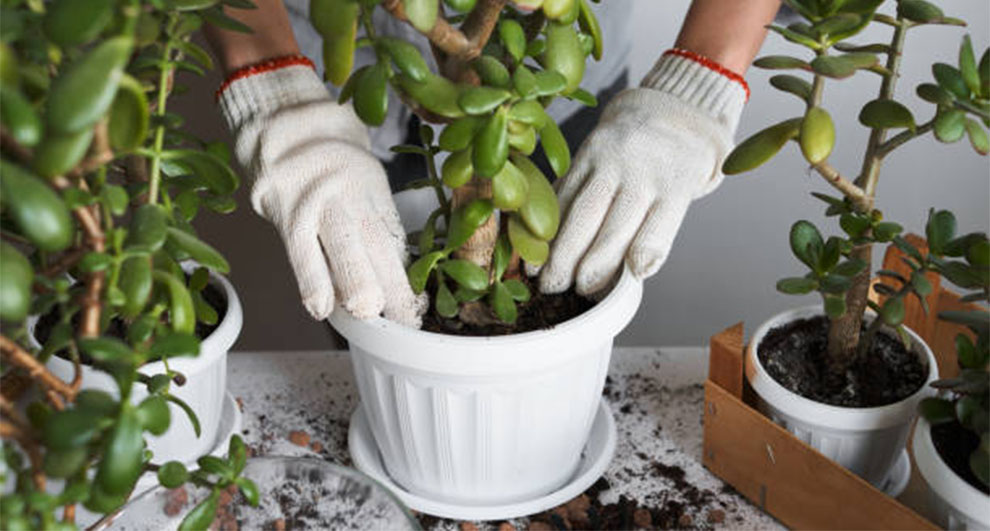
Repotting is important for plants to keep them going. Jade doesn’t require it often but if you have to do it, do it in spring when it has fresh growth showing up. Transplanting, if done incorrectly, tends to do more harm than good.
Transplanting the plant can lead to shock and stress out specially the plant roots hindering the plants growth altogether.
With damaged roots, nutrient absorption becomes difficult causing your plant leaves to turn yellow.
Related: How to save browning arborvitae?
How Do I Fix Yellow Leaves On My Jade Plant?
If you notice that your Jade plant changing to yellow color or its leaves falling off, know that it is treatable. In most cases, this problem can be treated easily by adjusting your Jade care routine, while in other cases; some drastic changes have to be made.
Read the below-mentioned ways to keep your Jade plant healthy:
A. Knowing the right cause and adjusting your care routine according to it
Most of the time by adjusting just a few things, you can retain the green and healthy leaves of your Jade plant. If you feel your Jade leaves are wet or squishy, maybe the problem is overwatering.
Cut back on the frequency of watering. On the other hand, if the leaves are dry and crispy, then you should probably water them more often.
Sometimes even changing the location of your plant or controlling the temperature can also resolve the yellowing issue.
So, the main thing here is to understand the cause which is causing the yellowing and then focus on solutions.
B. Removing dead leaves and repotting and providing the correct care
If a lot of your Jade plant leaves are turning yellow, you may not be able to fix the problem easily. In such a case, either you will have to go for a new plant or start a new plant from the healthy part of the existing plant.
Let’s look at how to do it:
- The stem or leaf you cut should be at least two to three inches.
- Let it sit for a few days in a warm place so that a callus forms on the cut area.
- Take a new pot and fill it with soil for easy draining.
- Lay the leaf on top of the soil and cover the cut end with the soil. Or stick the stem cuttings in the soil.
- Don’t pour any water. Place the pot somewhere with indirect sunlight.
- Wait for a couple of weeks for the plant to start rooting.
- See whether the plant has rooted.
- Once it develops roots, water the plant carefully.
- Before you water it again, make sure the soil drains well and dries.
Related: How to propagate jade plant in water?
FAQs
Q. What does it mean if a Jade plant turning yellow and wrinkled?
Ans. A wrinkly yellowing Jade plant is a sign of overwatering.
Q. Why are my Jade plant leaves turning red and soft?
Ans. If the leaves are turning red and soft, it is most likely caused due to under watering. They will also turn purple or burgundy when they are extremely dehydrated.
Q. Why are my jade plant leaves turning brown?
Ans. Excessive moisture in the soil or around the plants can cause them to turn brown and then black before falling off. Underwatering can also make the leaves go brown due to a lack of moisture. Sometimes even too much sunlight can cause part of the leaves to turn brown.
Q. How do you make jade leaves greener?
Ans. Move your Jade to a shady area so that it turns greener. Make sure that the spot is not too dark or they will stretch and become weak. You can also give them a shot of nitrogen-rich fertilizer during spring and summer to make them greener.
Q. Will leaves grow back on the Jade plant?
Ans. Usually, leaves grow back if you give to adjust the care routine accordingly. Some lower leaves that are lost naturally due to aging will not grow back.
Q. Since over and under-watering are the most common cause of yellowing leaves, how often should you water jade plants?
Ans. Jade plants may need more water during spring and summer. However, watering once a week or even once a month should be enough. Check whether your plant needs water by sticking your finger in the soil. Only if you feel the soil dry, water your plants.
